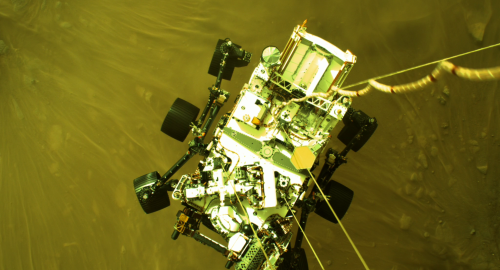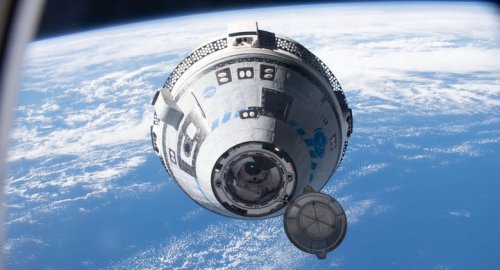
Natural Resources on Mars Could Produce Rocket Fuel, Say Researchers

- 1-11-2021, 19:46
INA – SOURCES
As it stands, NASA plans on using rocket engines that are fueled by both methane and liquid oxygen to depart Mars. The problem? Neither of these exist naturally on Mars, meaning that "30 or so tons" of methane and liquid oxygen would be needed to be transported from Earth to Mars for the return trip. NASA estimates this part of the process could cost upwards of $8 billion.
NASA has explored the idea of reducing this cost by using chemical reactions to produce liquid oxygen from carbon dioxide in the Martian atmosphere, but methane would still be needed to be transported from Earth to Mars.
These aforementioned scientists have proposed an alternative solution that would not only let astronauts produce methane and liquid oxygen from Martian resources, but the process would also provide extra oxygen for them to use.
Instead of transporting tons of methane and liquid oxygen, astronauts would bring with them two microbes on their trip to Mars. The first - cyanobacteria - would "use sunlight to create sugars via photosynthesis after given carbon dioxide from the Martian atmosphere and water taken from Martian ice." The second - a genetically modified E. coli bacteria - would "ferment those sugars into a rocket propellant called 2,3-butanediol, which is currently used on Earth to help make rubber."
2,3-butanediol is weaker rocket fuel than methane, but Mars' gravity is only one-third of Earth's, which would make this solution a good option for take-off.
"You need a lot less energy for lift-off on Mars, which gave us the flexibility to consider different chemicals that aren't designed for rocket launch on Earth," study senior author Pamela Peralta-Yahya said in a statement. "We started to consider ways to take advantage of the planet's lower gravity and lack of oxygen to create solutions that aren't relevant for Earth launches."
Enzymes would also be needed to be brought from Earth that could digest the cyanobacteria and free up their sugars and industrial seperation techniques would need to be utilized to "extract the 2,3-butanediol from the E. coli fermnetation broth."
A proposed rocket fuel plant on Mars that would span roughly "four football fields" would be built, and it would "use 32% less power than the strategy that involved shipping methane from Earth and generate 44 tons of excess oxygen to support human crews. However, it would weigh three times more."
The scientists note that further optimizations could increase microbial productivity to use 59% less power and weigh 13% less, all while "still generating 20 tons of excess oxygen."
"Given the distinct advantages that the biological process provides, such as excess oxygen generation for colony formation, we should start thinking about how to engineer microbes for their safe use on Mars," Peralta-Yahya said.
S. Korea plans $2 bn emergency aid for auto sector hit by U.S. tariffs
- International
- 08:58
U.S. revokes all visas for South Sudanese citizens
- International
- 08:00
Al-Amiri warns of any war between Iran and the US
- politics
- 25/04/01
ChatGPT temporarily down due to pressure from cartoon trend
- Articles
- 25/03/30












